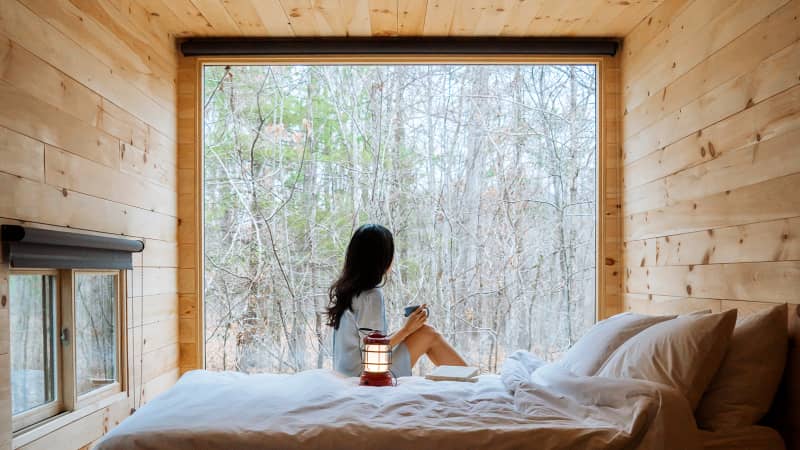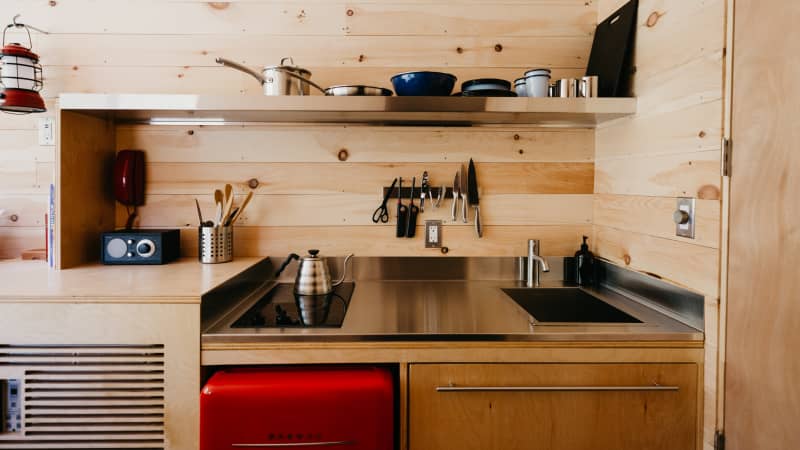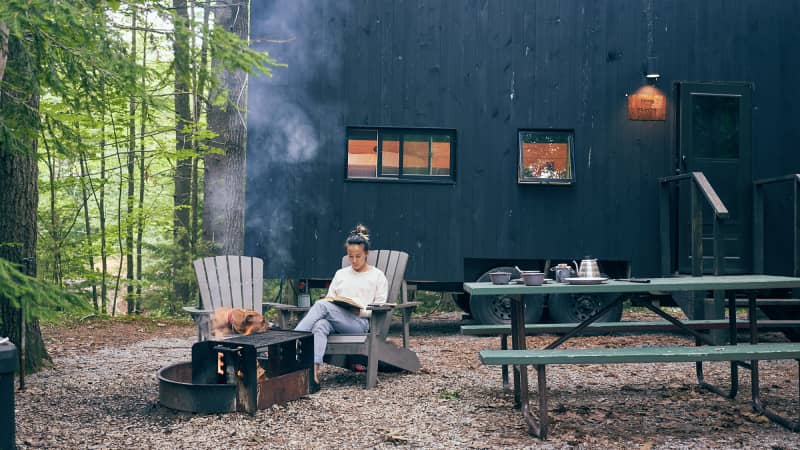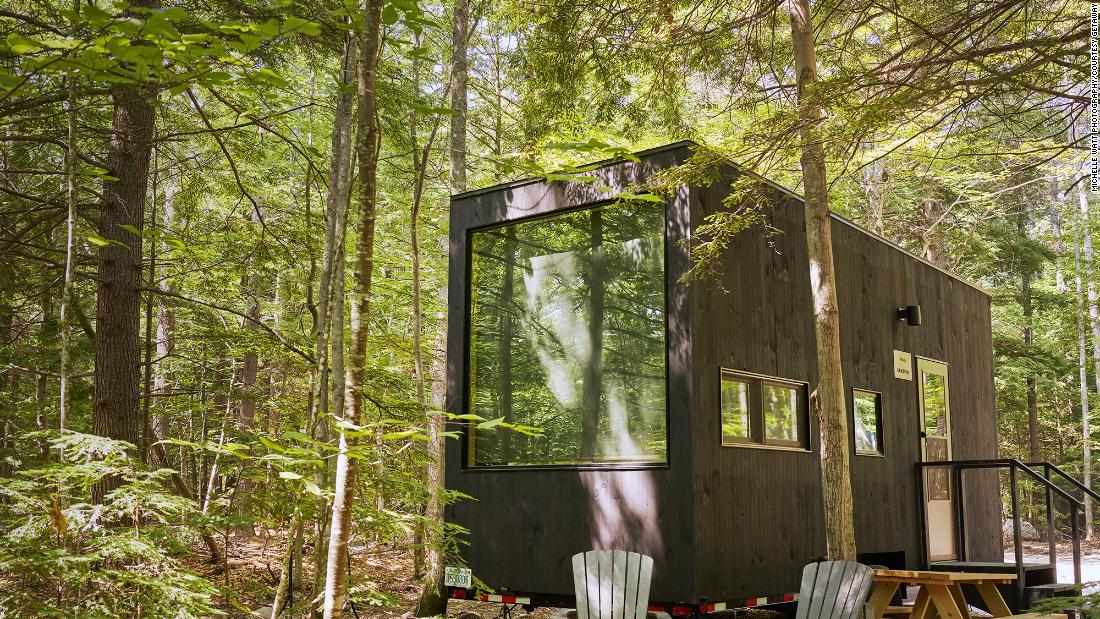(CNN) — No Wi-Fi and spotty cell service hold a certain allure after 13 months of Zoom calls.
That lack of connectivity is a key selling point for Getaway, a mini-vacation concept that has grown in the past six years from a few tiny rental cabins outside of Boston to 581 custom-built cabins sprinkled across 15 locations in the United States.
Fifty of those very petite cabins — only 140 to 200 square feet — will welcome guests for the first time on Thursday at Getaway Dale Hollow, located on 415 acres about two hours northeast of Nashville, Tennessee.
Getaway has had a very busy pandemic year, with a 150% year-over-year increase in bookings since March of 2020. Last April, a month after the US locked down, bookings were up by at least 250%, according to Jon Staff, Getaway’s founder and CEO.
Getaway has always been “totally socially distant” — for reasons unrelated to the pandemic, Staff said.
“We created a business that is socially distant for a different reason, which is to give people the time and space to disconnect and recharge,” he said. “But the fact of the matter is, when we picked our heads up from the craziness [of locking down] it was like, ‘oh look, our business is cabins in the woods, 100 to 250 feet apart from any other cabin in the woods, there’s no check-in desk, there’s no bar, there’s no restaurant, there’s no group fire pit.'”
Getaway touts the fully equipped, drive-up cabins as having “everything you need and nothing you don’t” to relax in the woods.

A window onto the woods is each Getaway cabin’s defining feature. Some cabins have queen bunks.
Courtesy Getaway
Simple and immersive
The cabins — essentially a little room on wheels — are designed around a huge window next to the bed. The view, usually right into the woods, makes guests feel almost as if they’re outside sleeping among the trees — from the comfort of either one queen-size bed or queen bunks outfitted with crisp white linens.
Interiors feature natural eastern white pine, a built-in table, a spare but stylish stainless steel kitchenette and a small bathroom with a shower and toilet at the far end. The tiny cabins are geared toward short stays — usually 1 to 3 days, although as of April 2021, the length of guest stays is up nearly 20% year over year.
The kitchen set-up — a sink and mini fridge, two burners, one pot, one pan, plus dishes and flatware — doesn’t lend itself to elaborate meals. An outdoor fire pit for each cabin — complete with grilling grate — offers expanded cooking options, living space and connection with the outdoors. Some basic provisions such as pasta, soup, oatmeal, tea and coffee (single-serve pour over packets for use with the cabin’s kettle) are available for purchase.

Each cabin features a kitchenette.
Courtesy Getaway
Heat, AC and window shades keep things comfortable. There’s an AM/FM radio — no TV, no Wi-Fi and potentially spotty or nonexistent cell service. A landline in each cabin can be used for calls to onsite Getaway staff or 911 for emergencies.
Contactless check-in has always been standard and restaurants, bars, pools and other amenities that guests expect at hotels have never been part of the package.
So pandemic guests haven’t felt like they’re missing out on the normal Getaway experience, Staff said.
Staying in the present moment
Unlike at hotels, where operators are “agnostic” about how guests spend their time, Staff said, “we care very much about how you spend your time, and hopefully it’s doing nothing” — or getting back in touch with your partner or your kids, staring into the campfire or hiking from trailheads within easy driving distance of the Getaway outposts.

Getaway cabins have their own private fire pits.
Michelle Watt Photography/Courtesy Getaway
Now that vaccination rates have ramped up in the US, many Americans will be seeking out some of the pre-pandemic experiences that have felt too risky for many travelers this past year — air travel, amusement parks, restaurants and big hotels — but Getaway anticipates an ongoing desire to connect with nature and disconnect from everything else.
“Getaway has always been about disconnecting from technology and disconnecting from being scheduled and disconnecting from commitments that are scheduled at least by the hour and maybe by the 15 minutes,” Staff said.
And as life gets busy again, breaks from that routine will be more essential than ever.
